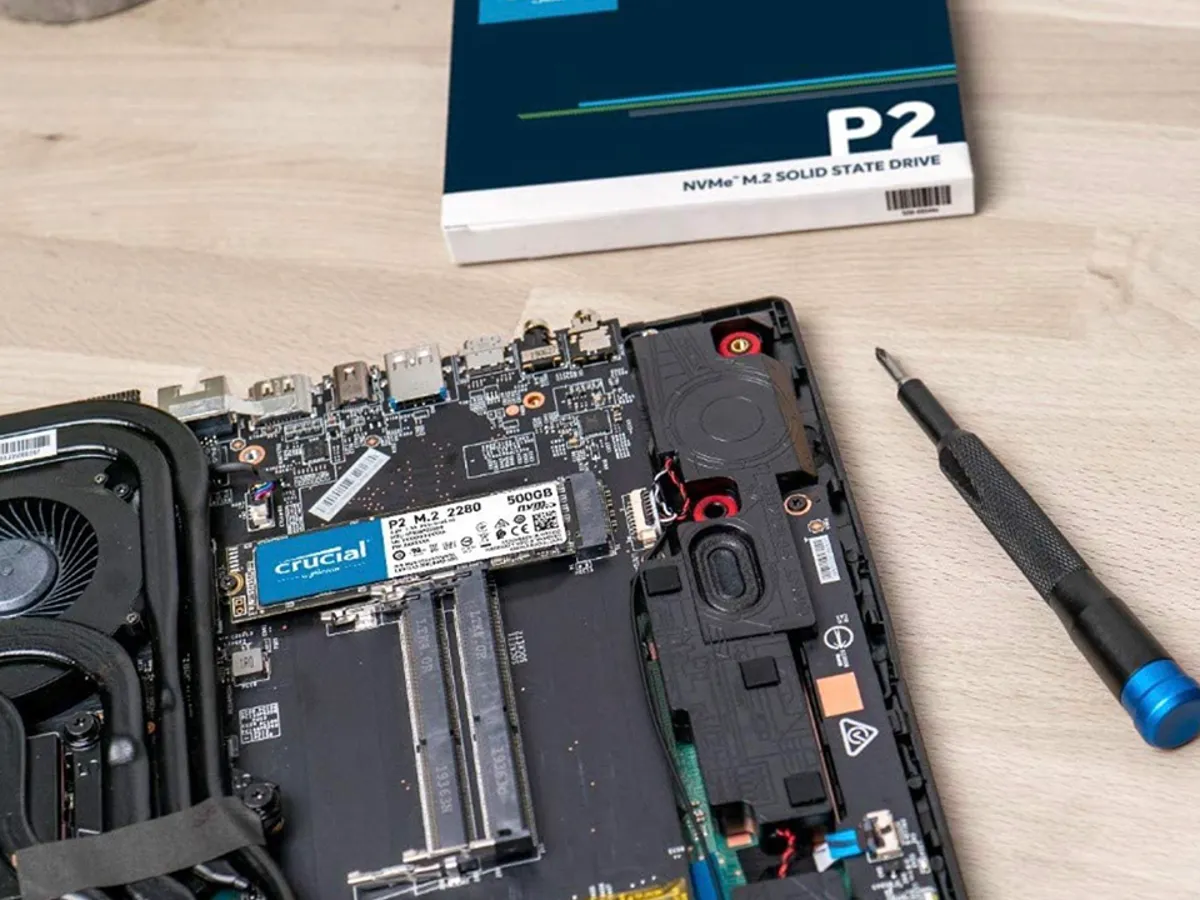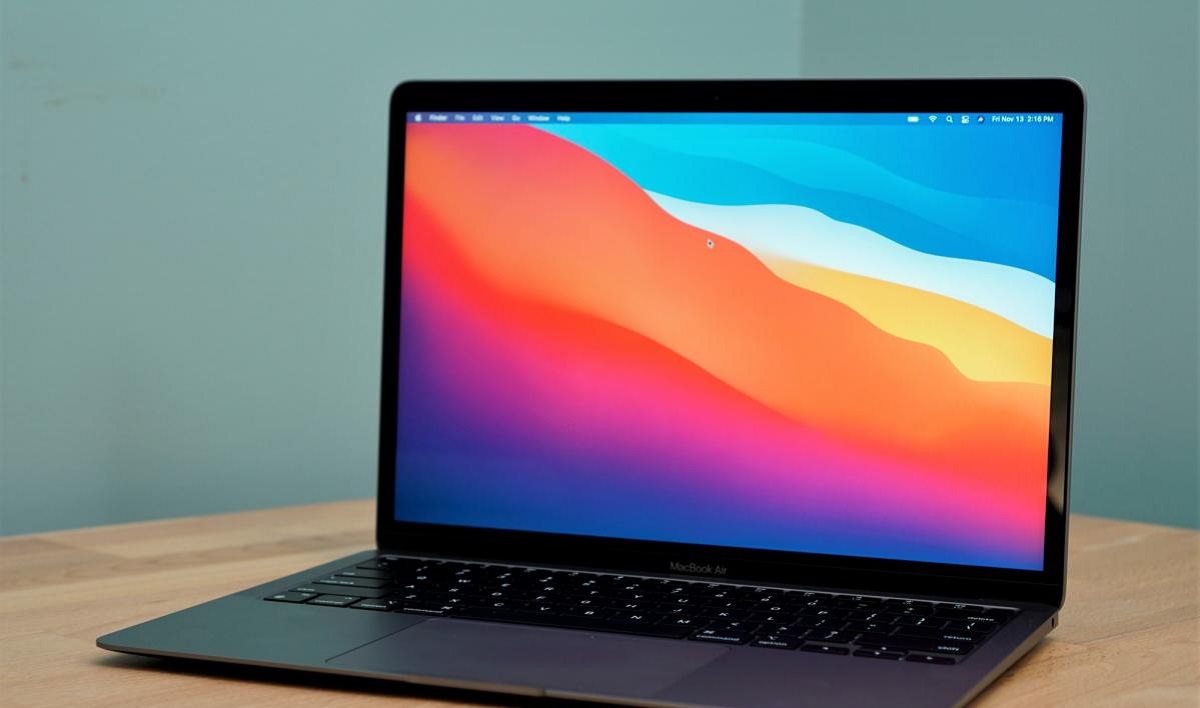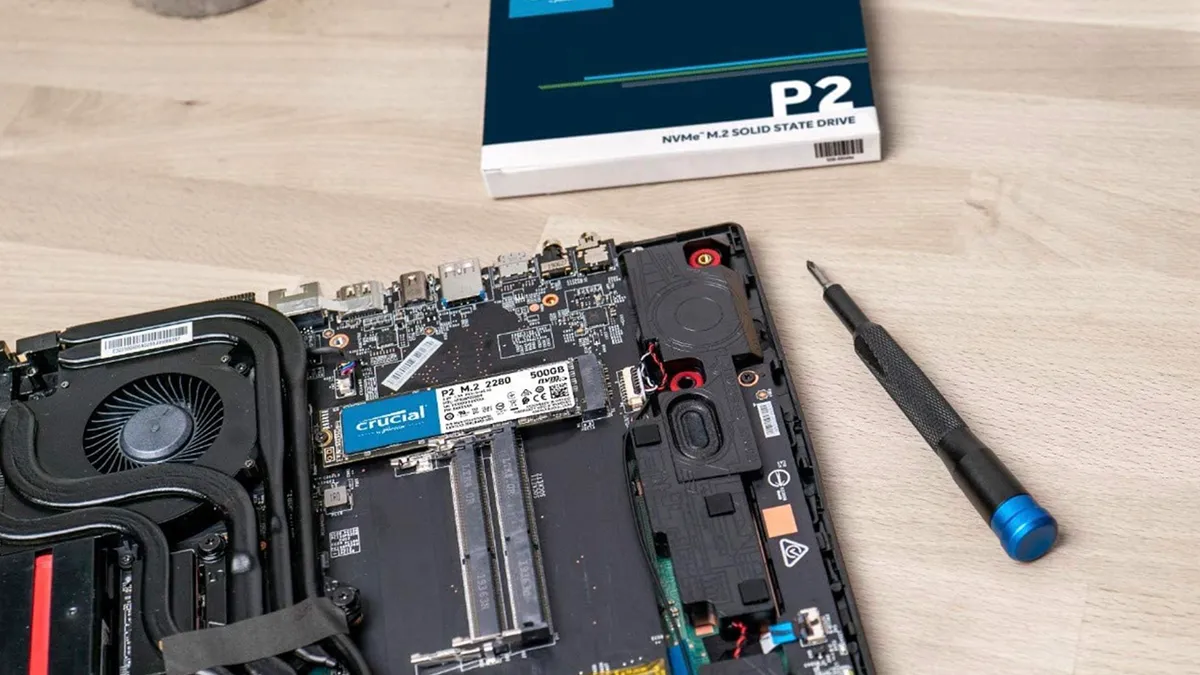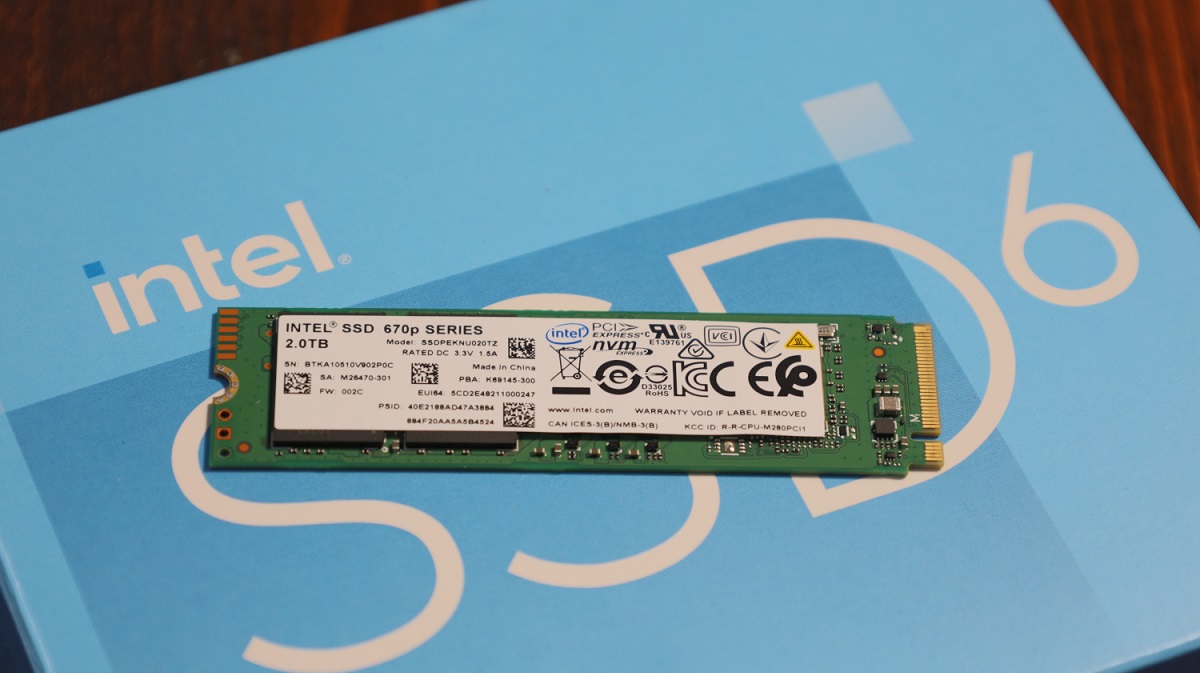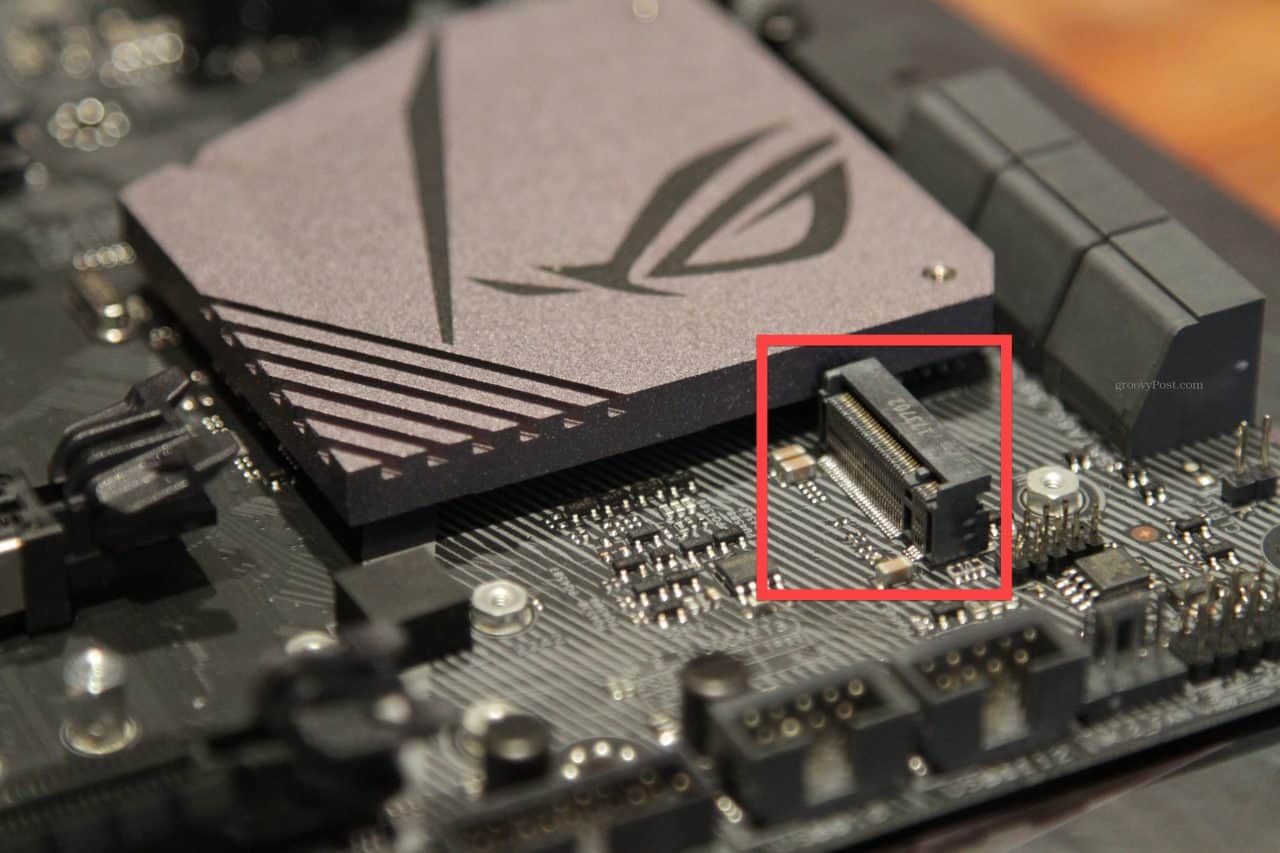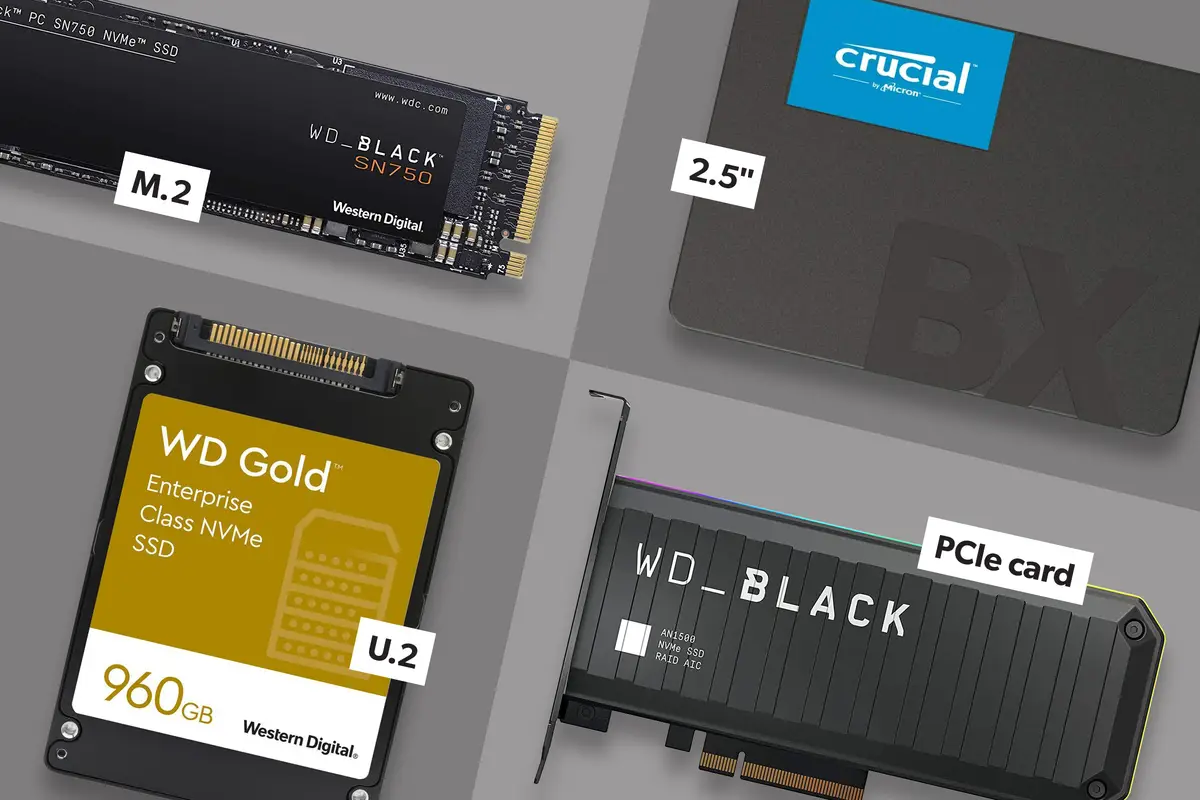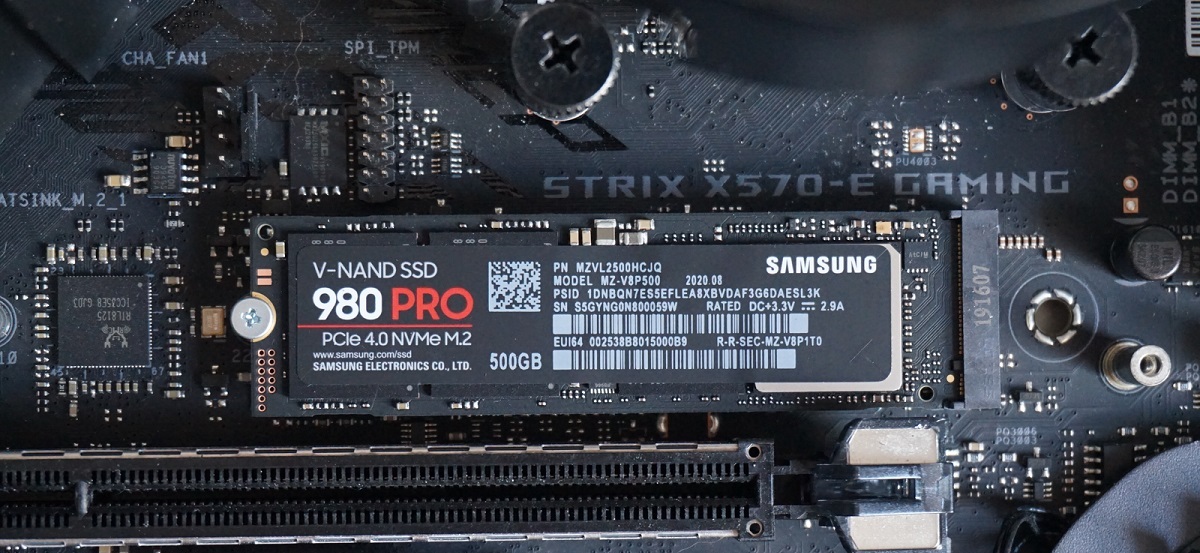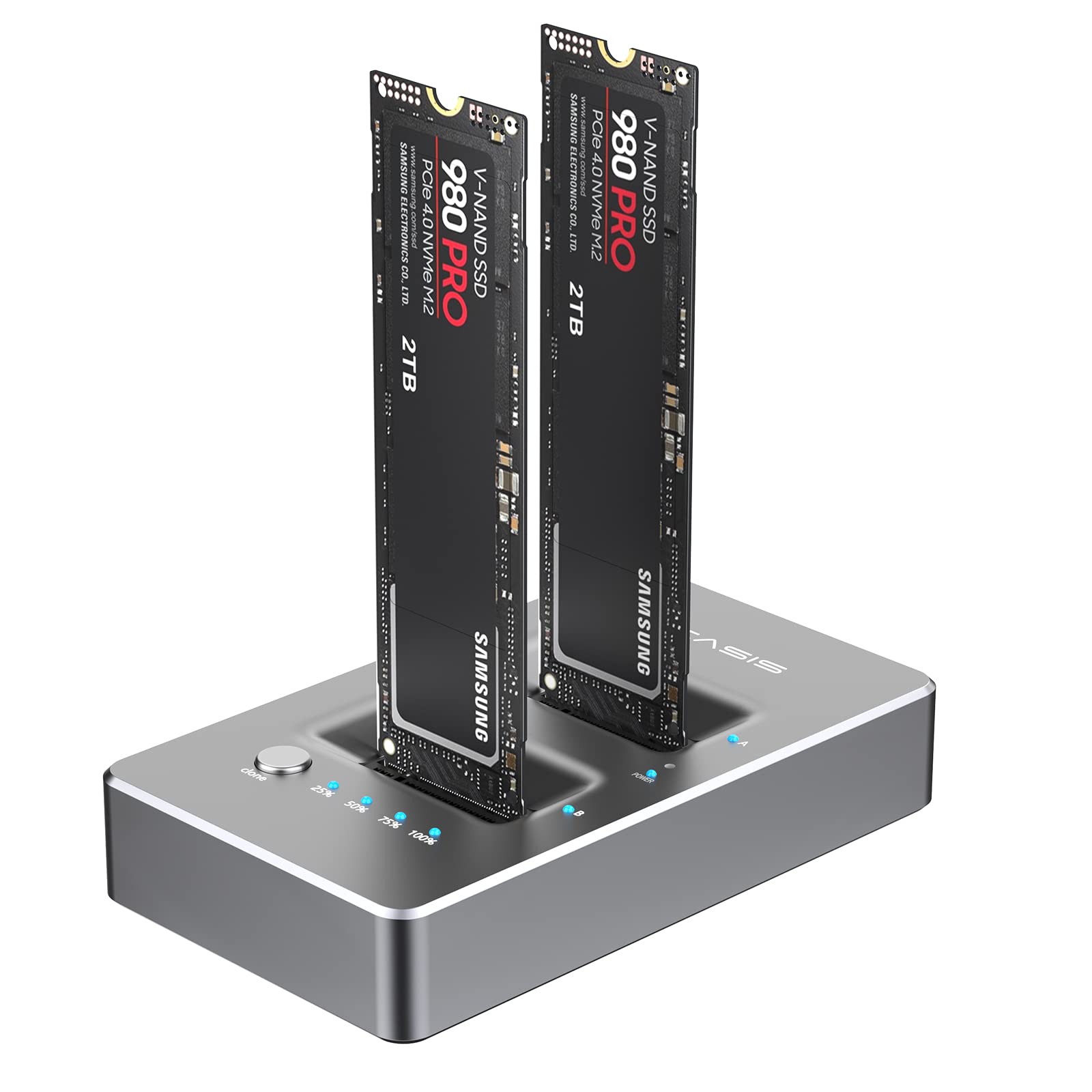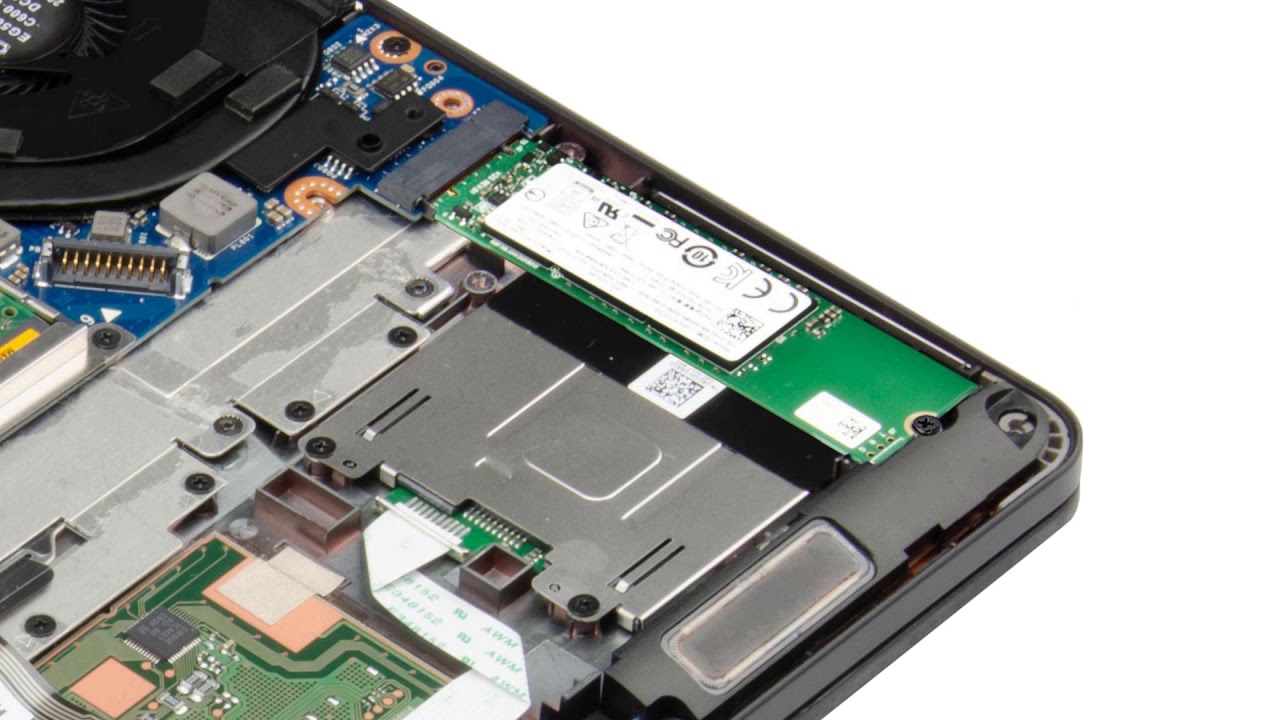Common Reasons Why M.2 SSD is Not Detected
Having an M.2 SSD that is not detected can be frustrating, especially when you are eager to harness its speed and performance benefits. However, there are several common reasons for this issue, and understanding them can help you troubleshoot and resolve the problem. Let’s explore these reasons below:
- Incorrect Installation or Connection: One of the most common reasons for an M.2 SSD not being detected is improper installation or connection. Ensure that the SSD is properly seated in the M.2 slot and that the screws are tightened appropriately.
- Incompatible Hardware or Software: Compatibility issues between the M.2 SSD and your hardware or software can prevent detection. Check the specifications of your motherboard and confirm that it supports the M.2 SSD you are using. Additionally, ensure that your operating system has the necessary drivers and updates.
- BIOS or UEFI Settings: The BIOS or UEFI settings on your computer can affect SSD detection. Make sure that the M.2 slot is enabled in the BIOS settings. Additionally, check for any specific M.2 configuration options that may need to be adjusted.
- Driver Issues: Outdated or incompatible drivers can prevent the M.2 SSD from being detected. Update the drivers for both the M.2 SSD and the motherboard to ensure compatibility and optimal performance.
- Faulty M.2 SSD: Sometimes, the M.2 SSD itself may be faulty. Test the SSD on another computer if possible, or try a different SSD in the same slot to determine if the issue lies with the SSD itself.
- Faulty Motherboard or Slot: A faulty motherboard or M.2 slot can also cause detection issues. Test the M.2 SSD on another motherboard or try a different slot, if available, to rule out any problems with the motherboard or slot.
- Physical Damage to the M.2 SSD: Physical damage, such as bent pins or connectors, can hinder SSD detection. Inspect the M.2 SSD for any visible signs of damage and replace it if necessary.
- Power Supply Issues: Insufficient power supply or faulty cables can interfere with M.2 SSD detection. Ensure that the power connections for both the SSD and the motherboard are secure and functioning correctly.
- Issues with Operating System: Sometimes, the operating system may need to be reinstalled or repaired for proper M.2 SSD detection. Check for any software conflicts or corruption that may be affecting the SSD recognition.
- Firmware Issues with the M.2 SSD: Outdated firmware can create compatibility problems and hinder detection. Visit the manufacturer’s website and update the firmware of your M.2 SSD if available.
By understanding these common reasons why an M.2 SSD is not detected, you can troubleshoot and resolve the issue more effectively. Always be sure to follow proper installation procedures, check for compatibility, and keep your drivers and firmware up to date. If the problem persists, consult with a professional or contact the SSD manufacturer for further assistance.
Incorrect Installation or Connection
One of the most common reasons for an M.2 SSD not being detected is incorrect installation or connection. When installing an M.2 SSD, it is crucial to follow the proper procedures to ensure a secure and functional connection. Here are some key points to consider:
Proper Seating: Make sure that the M.2 SSD is properly seated in the M.2 slot on your motherboard. The SSD should fit snugly into the slot, and the golden connectors should be fully inserted. It is essential to align the notches on the SSD with the key on the slot, ensuring that it is inserted correctly.
Screw Tightening: Most M.2 SSDs require a screw to secure them to the motherboard. After inserting the SSD into the slot, carefully tighten the screw to hold it in place. Be cautious not to overtighten, as it can cause damage to the SSD or the motherboard.
Check Connections: Ensure that all connections are secure. Double-check that the power and data cables are firmly connected to the SSD and the motherboard. If using a PCIe adapter or riser card, confirm that the connections between the adapter, SSD, and motherboard are secure.
Remove Obstructions: Check for any obstructions or debris in the M.2 slot that may prevent proper connection. Dust, dirt, or foreign particles can interfere with the electrical contacts. Use compressed air or a soft brush to clean the slot if necessary.
Verify Compatibility: Before installation, ensure that the M.2 SSD is compatible with your motherboard. Check the specifications of both the SSD and the motherboard to confirm compatibility. Different motherboards support different types and sizes of M.2 SSDs, such as PCIe or SATA, and specific keying configurations.
Follow Manufacturer Instructions: It is always advisable to consult the user manual or installation guide provided by the SSD manufacturer and the motherboard manufacturer. These resources often contain specific instructions and guidelines for installing M.2 SSDs correctly.
By paying attention to the correct installation and connection procedures, you can avoid potential issues with your M.2 SSD not being detected. Taking these steps will help ensure a secure, functional, and reliable connection, allowing you to enjoy the benefits of your M.2 SSD’s speed and performance.
Incompatible Hardware or Software
Another common reason for an M.2 SSD not being detected is compatibility issues with the hardware or software you are using. Here are some factors to consider when troubleshooting compatibility-related problems:
Motherboard Compatibility: Check the specifications of your motherboard to ensure that it supports the type and size of M.2 SSD you are trying to install. Different motherboards have different M.2 slot designs, supporting either PCIe or SATA interfaces, as well as different keying configurations. Verify that your motherboard has an M.2 slot that is compatible with your SSD.
Operating System Compatibility: Certain operating systems may require specific drivers or updates to recognize and detect M.2 SSDs properly. Ensure that your operating system is compatible with the M.2 SSD model you are using. Visit the manufacturer’s website to download and install any necessary drivers or updates for optimal compatibility.
Software Conflicts: In some cases, software conflicts can prevent the detection of M.2 SSDs. Antivirus programs, disk management software, or other system utilities may interfere with the SSD recognition process. Temporarily disable any third-party software that may be causing conflicts and check if the SSD is detected.
BIOS/UEFI Updates: Outdated BIOS or UEFI firmware versions can result in compatibility issues with M.2 SSDs. Visit the motherboard manufacturer’s website and check for any available firmware updates for your specific motherboard model. Updating the BIOS or UEFI can often resolve compatibility problems and improve SSD detection.
Driver Updates: Ensure that you have the latest drivers installed for both your motherboard and the M.2 SSD. Outdated or incompatible drivers can prevent the SSD from being detected. Visit the manufacturer’s websites to download and install the most up-to-date drivers for improved compatibility.
Hardware Conflicts: Check for any hardware conflicts within your system. Issues with other hardware components, such as incompatible PCIe devices or faulty expansion cards, can interfere with the M.2 SSD detection process. Remove any unnecessary hardware temporarily and test if the SSD is detected.
Review System Requirements: Always review the system requirements provided by the M.2 SSD manufacturer before purchasing. Ensure that your hardware and software meet the recommended specifications for optimal compatibility and performance.
By considering the compatibility factors outlined above, you can troubleshoot and resolve any issues related to incompatible hardware or software. Ensuring proper compatibility will increase the likelihood of your M.2 SSD being detected and functioning as expected.
BIOS or UEFI Settings
The BIOS (Basic Input/Output System) or UEFI (Unified Extensible Firmware Interface) settings on your computer play a crucial role in determining whether the M.2 SSD is detected. Configuration discrepancies or misconfigured settings can prevent proper recognition of the SSD. Here are some key aspects to consider:
Enable the M.2 Slot: Access your computer’s BIOS or UEFI settings by pressing the designated key during the boot process (usually displayed on the startup screen). Once in the settings, navigate to the hardware or storage section and ensure that the M.2 slot is enabled or set to “Auto.” This will allow the system to detect the SSD connected to the M.2 slot.
Set the Boot Order: In some cases, the boot order may not be configured correctly, prioritizing other drives over the M.2 SSD. Go to the boot options or boot priority section in the BIOS/UEFI settings. Ensure that the M.2 SSD is set as the primary boot device, or adjust the boot order to give it priority over other drives.
Check for Secure Boot or Fast Boot Options: Certain BIOS/UEFI settings, such as Secure Boot or Fast Boot, may affect SSD detection. These features are designed to enhance security or speed up boot times but can sometimes interfere with the recognition of newly installed hardware. Try disabling these features temporarily and check if the M.2 SSD is detected.
UEFI vs. Legacy BIOS: Depending on your motherboard and system configuration, you may need to select the appropriate BIOS mode in the settings. UEFI mode offers more advanced features but requires the system to be booted in UEFI mode as well. Legacy BIOS mode, on the other hand, uses the traditional BIOS interface. Ensure that you have the correct mode selected for your system and SSD.
Update BIOS/UEFI Firmware: Outdated BIOS/UEFI firmware versions may have bugs or compatibility issues that can affect M.2 SSD detection. Visit the motherboard manufacturer’s website and check for any available firmware updates for your specific motherboard model. Updating to the latest firmware can often resolve such issues.
Reset BIOS/UEFI Settings: If you have made changes to the BIOS/UEFI settings previously and are experiencing detection issues, try resetting the settings to their default configuration. Look for the option to “Load Defaults” or “Reset to Default” in the settings menu to revert the changes and start with the default settings.
By ensuring that the BIOS/UEFI settings are properly configured, you can significantly improve the chances of your M.2 SSD being detected. Keep in mind that the BIOS/UEFI interface may vary depending on the motherboard manufacturer and model, so refer to the user manual or manufacturer’s documentation for specific instructions related to your system.
Driver Issues
Driver issues can often be a culprit when an M.2 SSD is not detected by your system. Outdated or incompatible drivers can hinder the communication between the SSD and the operating system, leading to detection problems. Here are some steps to address driver-related issues:
Update SSD Drivers: Visit the manufacturer’s website of your M.2 SSD and check for any available driver updates. Download and install the latest drivers specific to your SSD model. Updated drivers can improve compatibility and ensure proper communication between the SSD and the system.
Update Motherboard Drivers: It is important to have up-to-date drivers for your motherboard as well. Visit the manufacturer’s website and download the latest chipset and storage drivers. These drivers play a vital role in facilitating the detection and communication of the M.2 SSD.
Check for Compatibility: Ensure that the drivers you are using are compatible with your specific operating system and hardware configuration. Mismatched or incompatible drivers can cause detection issues. Refer to the documentation provided by the manufacturers to verify compatibility.
Uninstall Conflicting Drivers: Conflicting or outdated drivers can interfere with the proper functioning of the M.2 SSD. Use Device Manager or driver management software to identify any conflicting drivers. Uninstall them and then restart your system. Upon restart, the operating system should reinstall the necessary drivers, hopefully resolving any issues.
Reinstall SSD Drivers: If updating the drivers does not resolve the issue, you may need to reinstall the SSD drivers. Uninstall the existing drivers completely and then reinstall them using the latest versions obtained from the manufacturer’s website. This can help ensure a clean installation and avoid any corrupted or missing driver files.
Perform System Updates: It is advisable to keep your operating system up to date with the latest patches, fixes, and updates. These updates often include driver updates that can address compatibility and detection issues with various hardware components, including M.2 SSDs.
Consider Using Native Windows Drivers: In some cases, using the native drivers provided by the Windows operating system may be sufficient for the detection and functioning of the M.2 SSD. Try uninstalling any third-party drivers and rely on the default drivers provided by Windows to see if the SSD is detected.
By addressing any driver-related issues, you can overcome detection problems and improve the performance of your M.2 SSD. Ensure that you regularly update both the SSD drivers and the motherboard drivers, as well as keeping your operating system up to date with the recommended updates.
Faulty M.2 SSD
A faulty M.2 SSD can be a reason why it is not being detected by your system. Despite proper installation and configuration, SSDs can experience defects or failures. Here are some signs and steps to identify and address a faulty M.2 SSD:
Signs of a Faulty SSD: If your M.2 SSD is not being detected and you have ruled out other potential causes, it is possible that the SSD itself is faulty. Look for any signs such as error messages during boot, random system crashes, extremely slow performance, or the SSD not being recognized by other computers.
Test on Another System: To confirm if the M.2 SSD is faulty, try testing it on another system. If the SSD is not detected on multiple systems, it may indicate a hardware or firmware issue with the SSD itself.
Update SSD Firmware: Check the manufacturer’s website for any available firmware updates for your M.2 SSD. Firmware updates can address known issues and improve the compatibility and performance of the SSD. Follow the manufacturer’s instructions carefully to update the firmware.
Perform a Secure Erase: Some SSDs offer a secure erase functionality that wipes all data and resets the SSD to its original state. This process can often resolve issues with a faulty SSD. Refer to the manufacturer’s instructions or utility software to perform a secure erase.
Contact Manufacturer Support: If you have tested the SSD on multiple systems, updated the firmware, and performed a secure erase, but the SSD is still not detected, it is advisable to contact the manufacturer’s support for further assistance. They may provide additional troubleshooting steps or consider replacing the SSD if it is under warranty.
Consider Professional Data Recovery: If your M.2 SSD is not being detected and contains important data that you cannot afford to lose, you may need to consider seeking professional data recovery services. Experts can help recover data from faulty SSDs, even if they are not being detected by the system.
While a faulty M.2 SSD can be frustrating, troubleshooting and contacting the manufacturer’s support are key steps towards resolving the issue. Always refer to the manufacturer’s instructions and warranty policies to ensure that you follow the appropriate steps for handling a faulty SSD.
Faulty Motherboard or Slot
If your M.2 SSD is not being detected, it is possible that the issue lies with a faulty motherboard or M.2 slot. Although less common, hardware failures can occur that prevent proper communication between the SSD and the system. Here are some steps to identify and address this potential problem:
Test the M.2 SSD on Another Motherboard: To determine if the issue lies with the SSD or the motherboard, try installing the SSD on another system with a compatible M.2 slot. If the SSD is detected on the other motherboard, it suggests that the issue lies with your original motherboard.
Test Another M.2 SSD on Your Motherboard: Conversely, to confirm if the motherboard or M.2 slot is faulty, try installing a known working M.2 SSD on your motherboard. If the test SSD is not detected, it indicates a problem with the motherboard or the specific M.2 slot.
Inspect the M.2 Slot: Physically examine the M.2 slot on your motherboard for any visible damage or loose connections. Check for bent pins or debris within the slot. If you find any issues, carefully attempt to correct them. However, exercise caution to avoid further damage while doing so.
Try Using a Different M.2 Slot (if available): Some motherboards might have multiple M.2 slots. If your motherboard has more than one slot, try inserting the SSD into a different slot to see if it is detected. This can help determine if the issue is specific to the M.2 slot in question.
Consult a Professional: If you suspect a faulty motherboard or M.2 slot, it is advisable to consult with a professional technician or contact the motherboard manufacturer’s support for further guidance. They may provide specific troubleshooting steps or recommend repair or replacement options if the issue is hardware-related.
Consider Warranty Coverage: If your motherboard is still under warranty, contact the manufacturer to inquire about repair or replacement options. It is important to follow their instructions and warranty policies to avoid voiding any coverage.
While it is relatively rare, a faulty motherboard or M.2 slot can indeed be the cause of M.2 SSD detection issues. By testing the SSD on another motherboard or trying a different M.2 slot, you can determine if the problem lies with the SSD or the motherboard itself. Seeking professional assistance or contacting the manufacturer’s support is recommended for further guidance in resolving hardware-related issues.
Physical Damage to the M.2 SSD
Physical damage to the M.2 SSD can be another reason why it is not being detected by your system. Any damage to the SSD can hinder its proper functioning and prevent it from being recognized. Here are some steps to identify and address physical damage to the M.2 SSD:
Inspect the SSD: Carefully examine the M.2 SSD for any visible signs of physical damage. Look for bent pins, broken connectors, or any other visible issues. Ensure that the golden connectors on the SSD are clean and free from debris.
Check for Loose Connections: Verify that the M.2 SSD is securely connected to the M.2 slot on your motherboard. Sometimes, a loose connection can lead to detection problems. Gently push the SSD into the slot to ensure that it is inserted fully and seated properly.
Check for Bent Pins or Connectors: Bent pins or connectors can occur during installation or accidental mishandling of the SSD. If you notice any bent pins, carefully straighten them using a small tool such as a tweezer. Exercise caution to avoid further damage while doing so.
Remove Any Obstructions: Inspect the M.2 slot on your motherboard for any dirt, debris, or foreign objects that may be preventing proper contact between the SSD and the slot. Use compressed air or a soft brush to clean the slot if needed.
Test the SSD on Another System: To confirm if the physical damage is the cause of the detection issue, try installing the M.2 SSD on another computer. If the SSD is still not being detected on multiple systems, it is likely that the physical damage is affecting its functionality.
Contact the SSD Manufacturer: If you suspect physical damage to the SSD, it is recommended to reach out to the manufacturer’s customer support. Provide them with details about the issue and the observations you made during the inspection. They may guide you with specific troubleshooting steps or offer a warranty replacement if the damage is covered.
Consider Professional Data Recovery: If the M.2 SSD contains important data that you are unable to retrieve due to physical damage, consider seeking professional data recovery services. Experts have specialized tools and techniques to recover data from damaged SSDs.
Physical damage to an M.2 SSD can cause detection issues, but by conducting a careful inspection and verifying the connections, you may be able to identify and address the problem. If the damage appears to be irreparable or beyond your capabilities, contacting the manufacturer’s support or seeking professional assistance is crucial to explore potential repair or data recovery solutions.
Power Supply Issues
Power supply issues can often contribute to M.2 SSDs not being detected by your system. Inadequate power delivery or faulty cables can interfere with the proper functioning and recognition of the SSD. Here are some steps to identify and address power supply-related problems:
Check Power Connections: Ensure that the power connections for both the M.2 SSD and the motherboard are secure. Double-check the SATA or PCIe power cable connections to ensure they are properly plugged in. It is advisable to disconnect and reconnect the cables to ensure a secure connection.
Use Dedicated Power Cables: If your M.2 SSD requires a dedicated power cable, make sure it is used and connected to a compatible power source. Some SSDs may rely solely on the power provided through the M.2 slot, while others require additional power via SATA or PCIe cables. Consult the manufacturer’s documentation for your specific SSD model.
Replace Faulty Cables: If you suspect that the power cables themselves may be faulty, such as frayed or damaged cables, consider replacing them with new ones. Faulty cables can result in unstable power delivery, leading to detection issues.
Consider Power Supply Capacity: Ensure that your power supply unit (PSU) has sufficient capacity to support all the components in your system, including the M.2 SSD. Inadequate power supply capacity can cause power fluctuations or insufficient power delivery, affecting the SSD’s detection. Check the power requirements of your SSD and verify that your PSU meets or exceeds those requirements.
Test with a Different Power Supply: If you have access to another power supply unit, consider temporarily connecting it to your system to test if the M.2 SSD is detected. If the SSD is detected with the alternate power supply, it suggests that the original power supply unit may be faulty or unable to provide the necessary power.
Inspect Power Supply Unit (PSU) Connections: Inspect the connections between the power supply unit (PSU) and the motherboard. Ensure that all connections are secure and free from any dirt or debris. If there are any loose connections, tighten them carefully to ensure proper power delivery.
Consult a Professional Technician: If you have tried the above steps and continue to experience power-related issues with the M.2 SSD, it may be necessary to seek assistance from a professional technician or contact the manufacturer’s support. They can provide further guidance and determine if there are any underlying hardware issues.
By addressing power supply issues, such as ensuring secure power connections and verifying the capacity of your power supply unit, you can help ensure stable power delivery to your M.2 SSD. Troubleshooting power-related problems is crucial for maintaining reliable SSD detection and optimal performance.
Issues with Operating System
Issues with the operating system can sometimes be the cause of an M.2 SSD not being detected. Software conflicts, outdated drivers, or corrupted system files can prevent the operating system from properly recognizing and utilizing the SSD. Here are some steps to address these operating system-related issues:
Update Operating System: Ensure that your operating system is up to date with the latest patches and updates. These updates often include driver updates and bug fixes that can address compatibility issues with various hardware components, including M.2 SSDs.
Perform a System Restart: Sometimes, a simple system restart can resolve minor software conflicts or temporary glitches that are causing the SSD detection issue. Restart your system and check if the M.2 SSD is now recognized.
Run Device Manager: Open Device Manager and look for any devices with yellow exclamation marks or error symbols. This indicates that there may be driver issues or conflicts. Right-click on the affected devices and select “Update Driver” to search for and install the latest drivers available.
Uninstall Conflicting Software: Third-party software, such as disk management utilities or antivirus programs, can sometimes interfere with the detection of M.2 SSDs. Temporarily disable or uninstall such programs and check if the SSD is now detected. If the detection issue is resolved, consider using different software that is compatible with your SSD.
Perform a System Restore: If you recently made changes to your system or installed new software that may have caused SSD detection issues, you can perform a system restore to revert your system to a previous state. Choose a restore point from before the issue occurred, and follow the instructions to restore your system.
Repair or Reinstall the Operating System: If none of the above steps resolve the SSD detection issue, you may need to consider repairing or reinstalling your operating system. This will reinstall the necessary system files and drivers, potentially resolving any corrupted files or system-level conflicts that are preventing the SSD from being detected.
Contact Operating System Support: If you have exhausted all troubleshooting steps and are still experiencing SSD detection issues, consider reaching out to the support channels provided by your operating system’s manufacturer. They may have additional troubleshooting steps or insights specific to your operating system version.
By addressing issues with the operating system, such as updating the OS, resolving driver conflicts, and performing system restore or repair, you can increase the chances of your M.2 SSD being detected. Proper functioning of the operating system is vital for seamless communication and integration with the SSD.
Firmware Issues with the M.2 SSD
Firmware plays a critical role in the operation and compatibility of an M.2 SSD. Outdated or corrupted firmware can lead to detection issues and other performance-related problems. If you suspect firmware-related issues, here are some steps to address them:
Check for Firmware Updates: Visit the manufacturer’s website of your M.2 SSD and check for any available firmware updates. Download and install the latest firmware version specifically designed for your SSD model. Firmware updates often include bug fixes, performance improvements, and enhanced compatibility.
Follow Manufacturer’s Instructions: Carefully read the firmware update instructions provided by the manufacturer. Follow their guidelines to ensure a smooth and successful firmware update process. Improper firmware updates can potentially lead to irreparable damage to the SSD.
Backup Important Data: Before initiating any firmware update, it is crucial to backup your important data. While firmware updates generally do not erase data, unexpected errors during the process can result in data loss. Safeguard your valuable data by creating a backup before proceeding.
Consult Manufacturer’s Support: If you encounter difficulties while updating the firmware or encounter any error messages, it is recommended to contact the manufacturer’s customer support. They can provide further assistance, troubleshoot the issue, or guide you through the firmware update process.
Perform a Firmware Rollback: If you suspect that the latest firmware update is causing the detection issue, and previous versions were functioning correctly, you may consider rolling back to the previous version. However, this should only be attempted if explicitly recommended by the manufacturer and after exhausting other troubleshooting steps.
Consider Professional Assistance: If you are unable to resolve firmware-related issues on your own or are uncomfortable performing firmware updates, seek assistance from a professional technician. They have the expertise and knowledge required to handle firmware-related problems safely and effectively.
Firmware issues can significantly impact the detection and performance of an M.2 SSD. By staying proactive and keeping your firmware up to date, you can maximize the stability, compatibility, and functioning of your SSD. Always follow the manufacturer’s instructions and observe caution during any firmware update process to minimize the risk of potential data loss or damage.
Conclusion
When your M.2 SSD is not detected, it can be a frustrating experience. However, by understanding the common reasons behind this issue and following the appropriate troubleshooting steps, you can increase the chances of resolving the problem. Some of the most common reasons for M.2 SSD detection issues include incorrect installation or connection, incompatible hardware or software, BIOS or UEFI settings, driver issues, faulty SSD or motherboard, physical damage, power supply issues, operating system issues, and firmware issues.
It is crucial to make sure that the SSD is correctly installed and connected, ensuring proper seating and secure connections. Checking for hardware and software compatibility, updating drivers, and adjusting BIOS or UEFI settings can also help resolve detection issues. In addition, addressing physical damage, power supply issues, operating system conflicts, and firmware problems can contribute to a successful resolution.
If you encounter difficulties during the troubleshooting process or are unsure about how to proceed, it is always advisable to consult the manufacturer’s support or seek assistance from a professional technician. They can provide tailored guidance and specific recommendations based on your unique situation.
Remember, successfully resolving M.2 SSD detection issues requires patience, thoroughness, and attention to detail. By following the steps outlined in this article and staying proactive in maintaining your hardware and software, you can enjoy the fast and reliable performance that an M.2 SSD can provide.







